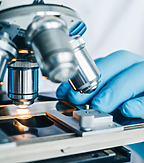Artikel | 24 november 2024
The EU Health Technology Assessment Regulation will soon apply

The Regulation (EU) 2021/2282 on health technology assessment (the “HTA Regulation”) which governs joint clinical assessments, joint scientific consultations and identification of new health technologies at EU level entered into force on 11 January 2022 and will apply from 12 January 2025. In this article we summarise some of the provisions and what Sweden is currently doing on implementation.
Introduction
Laws and regulations regarding medicinal products and medical devices have for many years largely been harmonised at EU level. However, the regulations on pricing and reimbursement for these products are subject to national laws and policies. The HTA Regulation represents a change in this respect, in that it aims to assist the Member States in this assessment. This will be done in the form of coordinated clinical assessments within the EU, based on the available scientific evidence. The idea is to prevent duplication of certain work both for national authorities and for companies wishing to apply for reimbursement in several countries. Against that background, the HTA Regulation mandates that health technology (medicinal products and medical devices) developers submit the required clinical data only once at EU level, reducing administrative burdens and ensuring consistency.
Joint clinical assessments
Joint clinical assessment are comparative analyses of the available clinical evidence on a health technology in comparison with one or more other health technologies or existing procedures. In short, joint clinical assessments are clinical reviews of the relative effectiveness of medicinal products and medical devices. However, such assessments do not include any financial assessment or any conclusion on pricing and reimbursement.
The rules governing these assessments are only applicable to medicinal products that have been granted marketing authorisations under the ”centralised procedure”, which allows the marketing authorisation holder to market the medicinal product and make it available to patients and healthcare professionals throughout the EU on the basis of a single marketing authorisation. This means that medicinal products that receive national approval, or approval through “mutual recognition” or “decentralised” routes, are not covered by the HTA Regulation. However, the rules are also applicable to certain higher-risk medical devices and in vitro diagnostic devices.
To ensure wide acceptance and enable expertise and resources to be pooled across national HTA authorities and bodies, the assessments are to be mandatory as of the following starting dates:
- 12 January 2025 − cancer treatments and medicinal products that are regulated as advanced-therapy medicinal products (ATMPs) (e.g. gene therapy, cell therapy and tissue-engineered products);
- 13 January 2028 − orphan medicinal products; and
- 13 January 2030 − all other medicinal products for which a joint clinical assessment is applicable.
The Member States are not bound by the assessment reports under the HTA Regulation, but are obliged to take them into account, for example when they take pricing and reimbursement decisions at the national level. Thus, the Member States are required to take the joint clinical assessments reports into account in their national HTA processes. For example, the Swedish Dental and Pharmaceutical Benefits Agency (“TLV”) have to take these reports into account prior to decisions on the pricing of and reimbursement for new health technology. For the Swedish authorities to be able to benefit from the joint clinical assessments and not have to repeat certain stages of investigation, the process needs to be able to interact with the current or future process in Sweden. In addition, Swedish authorities have to provide certain information for the process to be carried out at EU level, for example for “PICOs” (patient Population, Interventions, Comparator and Outcomes), which are new additional duties for the national authorities. Swedish authorities have found that in order for the Swedish participation to be as useful as possible, there needs to be a collaborative arena for the authorities operating in the area. The Swedish government has therefore commissioned the Swedish Medical Products Agency, the Swedish Agency for Health Technology Assessment of Social Services (SBU) and TLV to create such an arena. The aim is to clarify how the work should be conducted in Sweden, which authority that should do what and how collaboration should be arranged with the industry in Sweden. The authorities are to submit a report in writing on the assignment to the Swedish Ministry of Social Affairs by 13 December 2024.
Joint scientific consultations
As stated in the introduction, the HTA Regulation not only applies to joint clinical assessments. Joint scientific consultations are consultations to aid exchange of information with health technology developers regarding their development plans for a given health technology. Such consultations are to facilitate the generation of evidence that meet the likely evidence requirements for any subsequent joint clinical assessment on the health technology concerned. Joint scientific consultations are to emanate in an outcome document that outlines the scientific recommendation made. Joint scientific consultations are required, in particular, to encompass all relevant aspects of clinical study design, or aspects of clinical investigation design, including comparators, interventions, health outcomes and patient populations. A health technology will be eligible for joint scientific consultations where it is likely to be the subject of joint clinical assessment and where the clinical studies and clinical investigations are still at the planning stage. However, the joint scientific consultation outcome document shall not give rise to any legal impacts on, for example, Member States and shall not prejudice the joint clinical assessment that may be carried out on the same health technology. Health technology developers may request a joint scientific consultation. In the case of medicinal products, this can be carried out in parallel with the European Medicines Agency’s (“EMA”) scientific advice process. Similarly, in the case of medical devices, consultations may take place alongside expert panel reviews.
New health technologies
The HTA Regulation also includes regulations on identification of new health technologies. This aims to ensure preparation of reports on emerging health technologies that are expected to have a major impact on patients, public health or healthcare systems. Such reports are to be prepared on the basis of existing scientific reports and other relevant sources such as clinical study registers and EMA in connection with upcoming submissions of applications for marketing authorisations for medicinal products.
Conclusion
The HTA Regulation represents a significant step towards a more coordinated and efficient approach to evaluating health technologies in the EU. By fostering collaboration, reducing duplication and ensuring high-quality assessments, the HTA Regulation aims to enhance patient access to innovative treatments and support sustainable healthcare systems across Member States.
Setterwalls will monitor the effects of the regulation.


